Casey
Mighty Dragon of The Pit
[Constantly WIP. Will include creatures, little myths and backgrounds not relevant to overview, settings, world history, etc.]
Creatures of Aventador
+++
Dragons
Dragons are complex, intelligent creatures, with much room for various adaptations and differences according to climate and exposure. Stretching back to the dawn of time, most live for centuries and a selected few have survived for millenniums. Their vast knowledge knows no bounds; Elders ooze a sense of wisdom and serenity regardless of their element or environment, and have much to tell if given the chance.
While only a selected few have the ability to bond with a dragon to the point of the beast allowing the human to sit upon their back and ride them, it does not restrict the bonds between the dragons and those who are not able to ride. Dragons are used for work, be it farming, fishing, industrial, building - the variations of dragons and their environments allow for them to be useful in multiple fields. Many own dragons, though not all ride them.
Environments vary the adaptations, appearances and behaviour of the dragons greatly:
+++
no slide
These are merely guidelines to developing a dragon; they range from all shapes and sizes, colours and creeds. There is no right or wrong.
Creatures of Pleoth
xxx
Creatures of Aventador
+++
Dragons
Dragons are complex, intelligent creatures, with much room for various adaptations and differences according to climate and exposure. Stretching back to the dawn of time, most live for centuries and a selected few have survived for millenniums. Their vast knowledge knows no bounds; Elders ooze a sense of wisdom and serenity regardless of their element or environment, and have much to tell if given the chance.
While only a selected few have the ability to bond with a dragon to the point of the beast allowing the human to sit upon their back and ride them, it does not restrict the bonds between the dragons and those who are not able to ride. Dragons are used for work, be it farming, fishing, industrial, building - the variations of dragons and their environments allow for them to be useful in multiple fields. Many own dragons, though not all ride them.
Environments vary the adaptations, appearances and behaviour of the dragons greatly:
+++
no slide
- Water Dragons
-
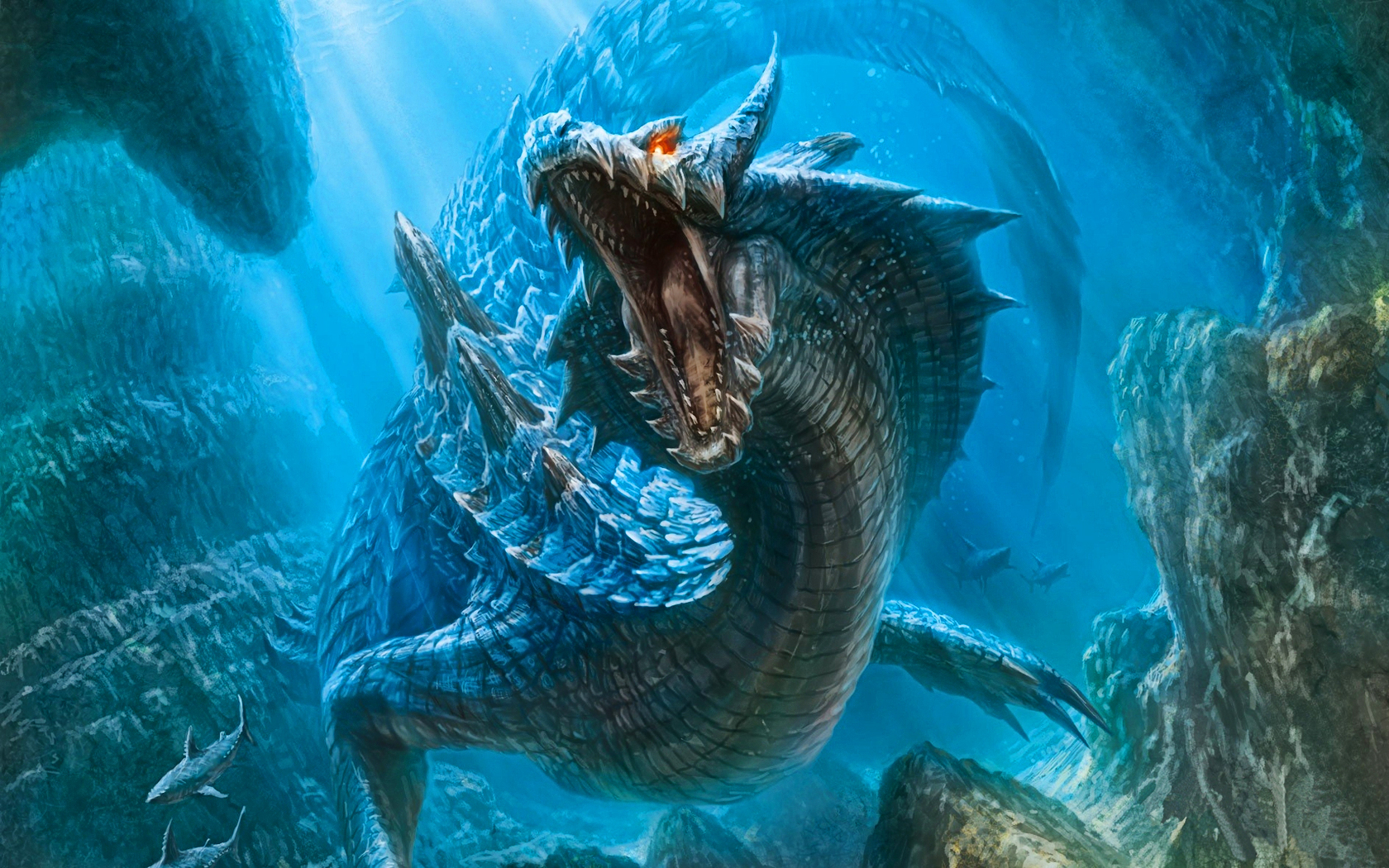
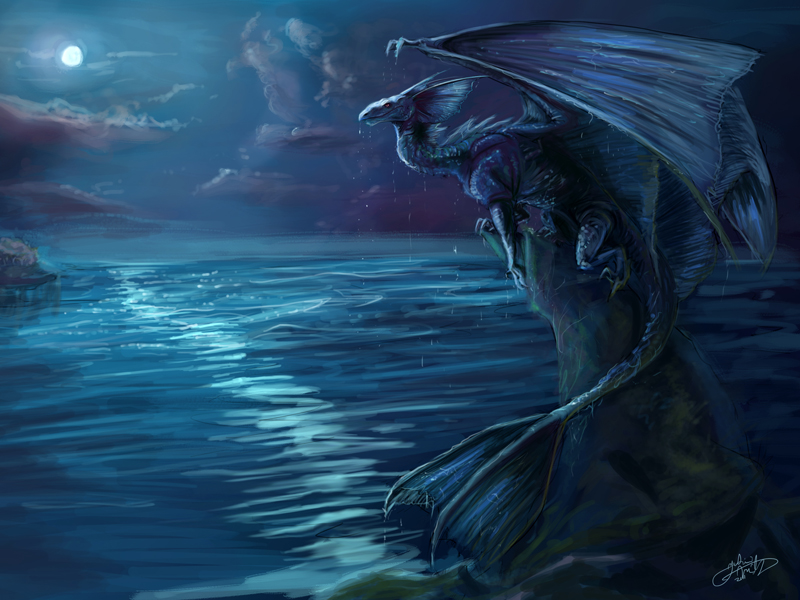
Those in watery regions are often adapted to swimming, with smaller wings for torpedo-shaped bodies or larger ones that act as fins, longer, cylindrical bodies and a diet of fish and water creatures. They are often serpentine in appearance and have frills along their body, a broad tail and gills. Their sizes can be infinitely big or abnormally small, ranging between a large horse to broader than a blue whale, as the water allows them to grow bigger than other dragons, but this does not aid in riding, which is why Water element riders are rarer than others.
They are rarer to find in the wild due to being poached when settlers first came to the island, as water dragons all nest on one specific island in the bowl of the harbour on the human side, and the eggs were either taken for food and valuables or killed. The shells are soft and often concealed by seaweed and algae in order to hide the transparent, sky blue shells, many laid at one time, though only a few make it to adulthood, which leads to the islands being protected under strict laws. Their mating habits are compared to turtles: two will breed and the female will be left to lay the eggs, though rather than on sand, on the island. Females will take turns in guarding the eggs, though are easily spooked and will often choose flight before fight. - Plains Dragons
-
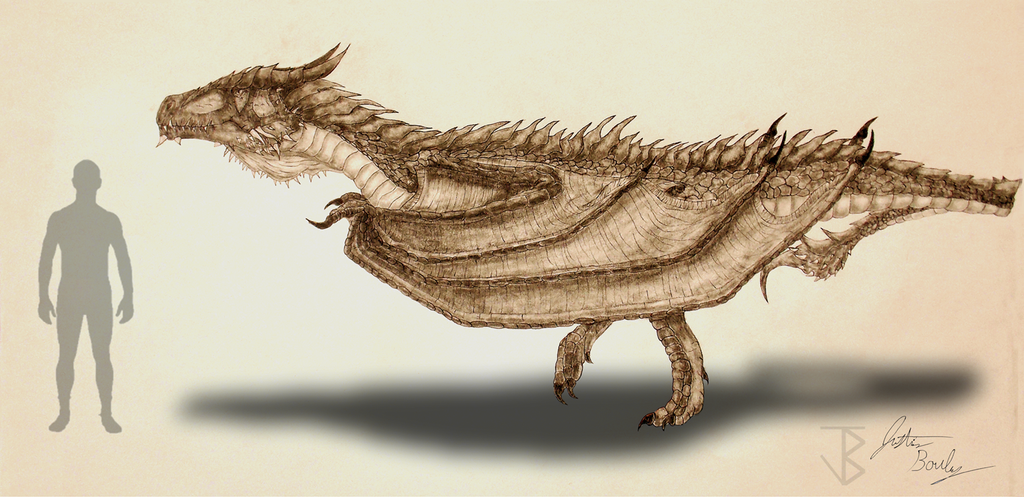
Plains dragons make use of long legs and lighter bodies used for running, large wings instead of front legs, and most often will either chase plains game or swoop in to strike, like birds. Their diets are most commonly the plains game, such as antelope and, much to a human's annoyance, livestock, but are quite adaptable. These dragons are usually pony-sized to boost endurance in chasing, but may grow quite large, up to a minivan if they are taught to rely on flying, and have documented wings dozens of feet in span. They make use of the vast plains and specialise in endurance and running, and do not do well in crowded spaces. Riders who make use of plains dragons will most often own large farms for the dragons to exercise in, rather than stick to towns where there is not much space. Their appearances are similar to Mountain dragons. Some have adapted to have small or no wings at all, though almost all have small front legs and larger back legs rather than four equal-sized legs like other dragons. It gives the dragons a more streamlined build.
Plains dragons make extremely anxious parents. Mating is once per year as mates are easy to find due to the creatures living in medium-numbered 'herds' of around thirty. Three to four eggs are laid, though only one is likely to survive per pair, even if all hatch. They are the most common species of dragon and are plentiful on the plains of Aventador. - Common Mountain Dragon
-
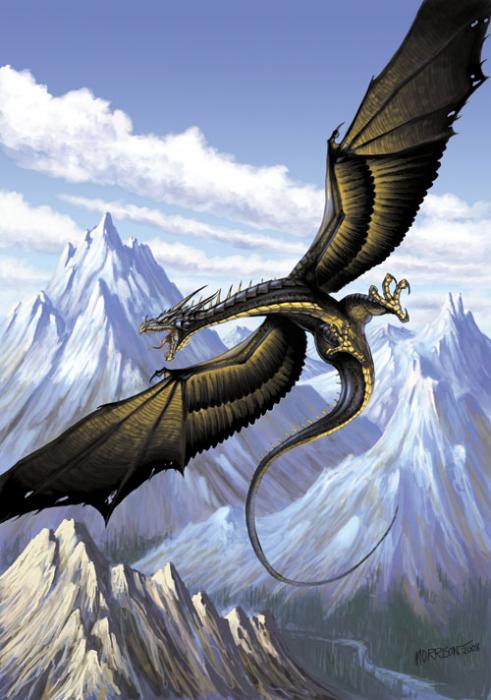

Mountain dragons mimic the stereotypical Western dragon and Wyvern and prefer to remain in mountainous regions, though are commended for their adaptability to most environments. The fliers, a term for those who prey on airborne food source, possess bones which are lighter and usually hollow to make flying ideal and easier, with large, outstretching wings made of membranes and tipped with paw-like appendages or claws on the ends to aid in clinging to steep mountainsides. Some are rather bird-like, though most commonly are similar to Western dragons. Their sizes are horse to small plane sized, wings stretching up to triple their body length, and number of limbs can be either two legs and two wings or four legs and two wings depending on reliability to the sky.
Mating is difficult for mountain dragons, as the females tend to be extremely picky in which mate they choose and judge by the quality of mating dance which the male produces, and the actual breeding process takes place in mid air. There are no eggs for a mountain dragon: due to the extremely cold temperature at the altitude in which they live, mountain dragons have adapted to it by taking on live birth, and raise the offspring into adolescence before forcing them from the nest. Bird-like dragons take on almost all characteristics of birds, including colourful plumage to attract a mate and the nesting process. - Common Western/Pass Dragon
-
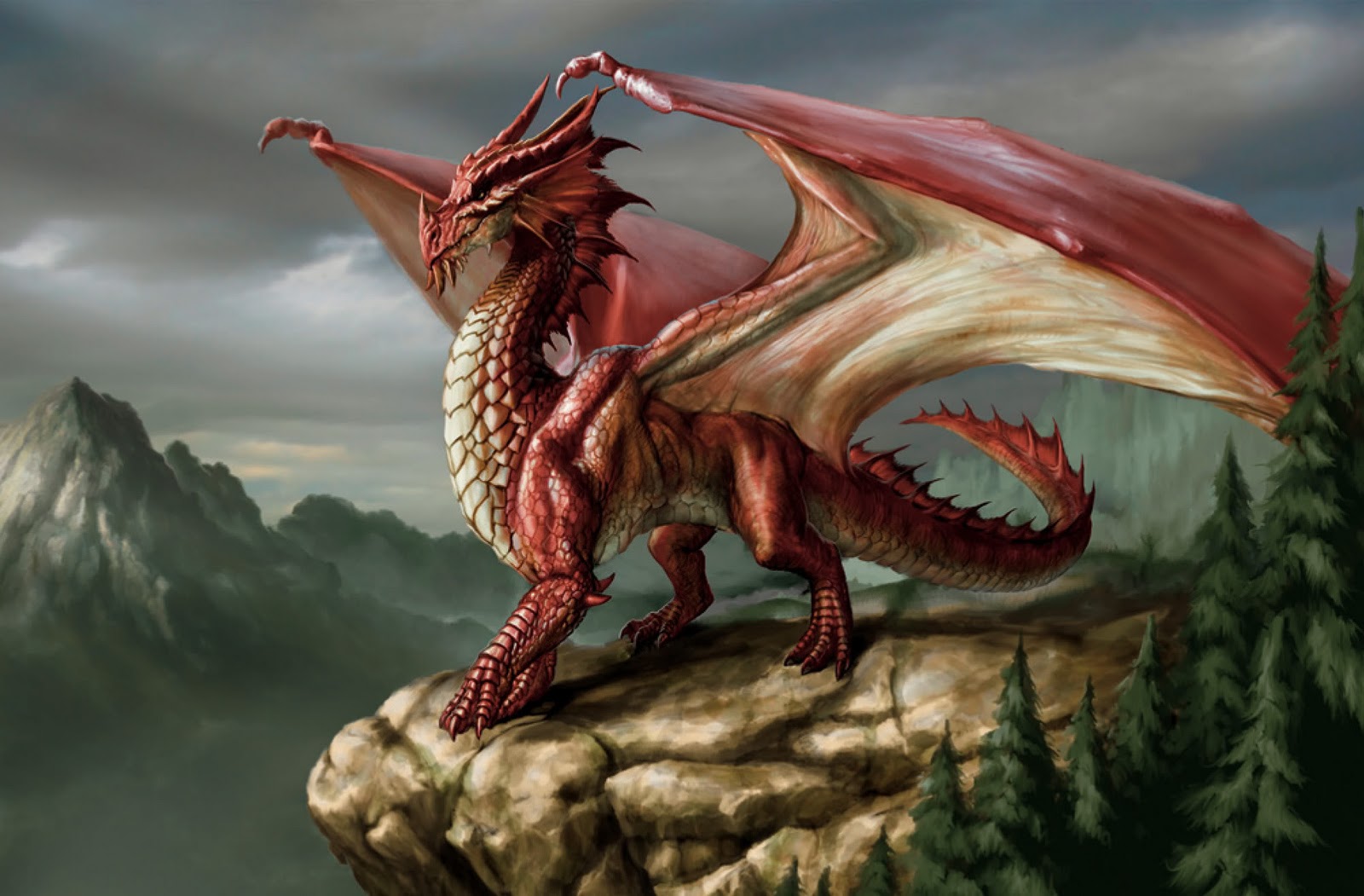

Pass dragons, dubbed this to avoid confusion with their smaller counterparts, have a bulkier build and are known to be bigger. These are the giants; they make use of caves, mountain areas and passes (thus, 'pass dragons') for homes in order to accommodate their sizes, but are able to live in most areas. Their wisdom is infinite and these are the sources of elder dragons; dwelling into a pass dragon's cave is a blessing little known, and little are to know. They are often filled with precious jewels and knowledge in the form of books or artifacts. While they are large, it takes many years for these dragons to grow to their notorious heights (some as tall as modern day buildings), and often grow bulky and cumbersome while they extend further. Pass dragons have large wings and bulky, gigantic bodies; often with decoration in the form of frills or intricate scales and horns. Some stay in slumber for years, and are notoriously independant; often staying without contact for centuries, or simply disappearing.
Males and females are almost identical in appearances; neither possess specific characteristics to one gender and do not use appearances to aid in mating during breeding season.
These dragons have a mate for life, though are able to gain another should their mate die or the bond be broken, though only have eggs every few decades: this makes both parents extreme protective of their eggs, causing them to move the nest a number of times during the eleven month gestation period. If they are apart of one, pass dragons are very family orientated and take much care in raising their offspring, only releasing them once they are fully grown or begin to challenge their parents for space. This may take a few years or a few decades. Pass dragons are unique in how they are able to mate either sex, as they do not mate for the sole purpose of breeding, and do not threaten their family members if they tread into their territory. - Forest Dragon
-
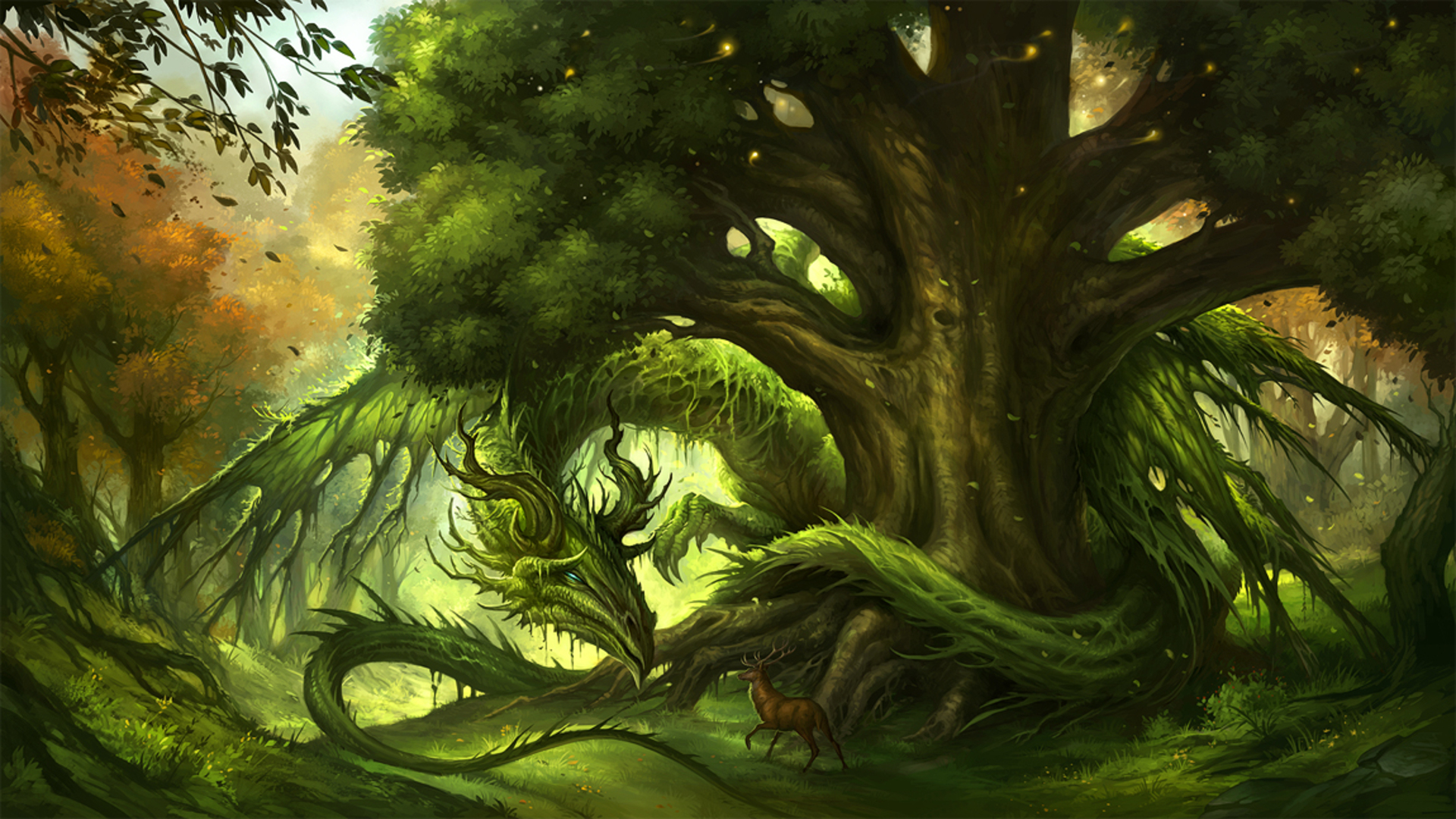

Forest dragons are the most secretive and agile of all. Their sizes differ from a large dog to two bull elephants: the smaller dragons are able to be more active and hunt for their food, while the larger ones are able to mold into the surrounding terrain and let themselves become one with the forest. They range from slender and elegant to bulky and extremely clumsy, with diets sometimes containing a vegetarian aspect, although it most commonly accommodates forest animals or fresh meat in general. Forest dragons are loyal and trustworthy with a large knack for picking up on energies and thoughts, especially emotions, which make it difficult to hide true feelings from them.
Males are less decoratively inclined, with smaller horns and more variations of colour, while the females will grow many, branch-like horns and frills along her body. They are not one for mates; breeding season comes around every two to three years when conditions are exactly right, and after mating, the two will leave one another and return to solitude, with little parenting from the mother, who abandons her eggs at first chance. Said eggs are enclosed in a thick nest of bushes and other greenery, created with thick, green shells to prevent them from being crushed by certain weights and keep the eggs incubated after the mother has left. - Dark Dragon
-
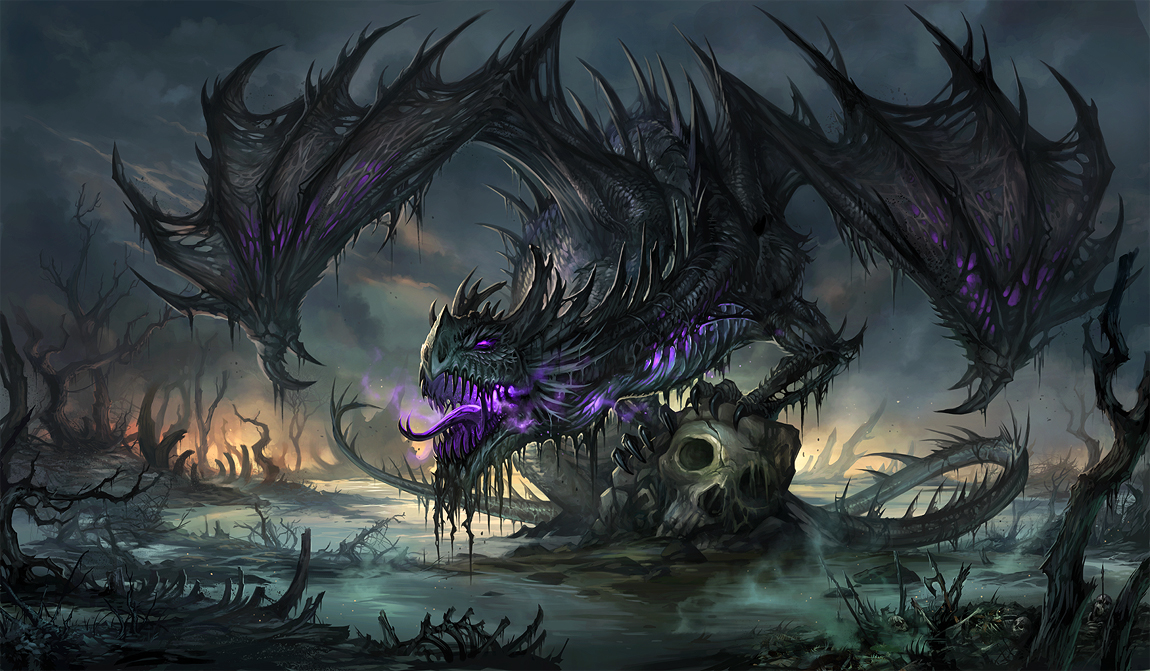
A dark dragon is merely a dragon which has been plagued by dark magic; usually brought upon the beast by betrayal to the species or a fault in character which influences it to harm unnecessarily. These dragons are banished from the main island, usually to neighbouring islands or lands, where none will be able to harm either man or beast. Due to the stained being of the animal, they are known to cause trouble when allowed, be it through magic or approaching the main land with intent to seek vengeance. Dragons are able to be affected whether alive or dead, which often makes for grotesque reanimations of the recently or long-since dead dragons from the burial grounds or those who have perched on the island, with some affected as far as halfway towards the nearest island border. This has the dragons and creatures become mindless skeletons or rotting reincarnations of what they once were, with somes' hearts visibly beating in their chests.
It is said that these dragons are able to spread diseases and negativities, much like the four horsemen, through their rotting breaths and mere presences. They are sought after by dark magicians, but due to their nature, are often impossible to tame and turn on all who get too close. - Barrens Dragons
-
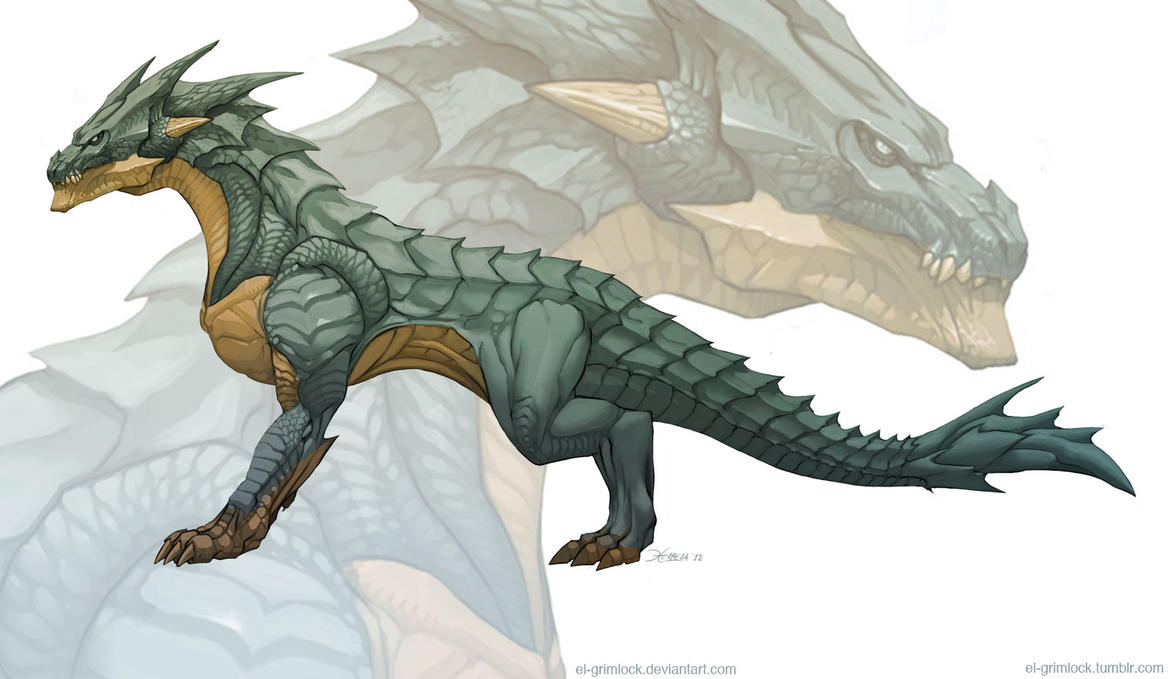

Barrens dragons, named after the island on which they are found, have evolved in the dusty, dry sands and scorching heat, where flying merely takes energy and isn't a necessity for travelling. Over centuries, these dragons have slowly but surely lost their wings entirely: rather becoming more muscular and relying on their legs to take them across the desert and taking on reptilian characteristics, sometimes even taking on dinosaur-like appearances. Their scales are thick to protect them from scalding heat and have thick foot pads, and rather than have decorative pieces and spines along their bodies, barrens dragons have bright colours and patterns to attract mates.
Due to their more reptilian nature, they are considered the 'dumber' of the dragons species, as they lacked the civilisations to learn from and had only recently been tamed. The average size they grow to is a bulky horse, with not much variance in their sizes throughout their lives: they have a sudden growth spurt through adolescence, going from a puppy sized to a horse, and then remain that size until death. Eggs are laid and then buried in sand, though the father is never far, mother even less so, so treading upon the legs without encountering a parent is extremely unlikely. Once mated, two Barrens dragons are together for life - if a mate dies, the other is left to mourn and live the rest of its life alone. - Ice Dragons
-
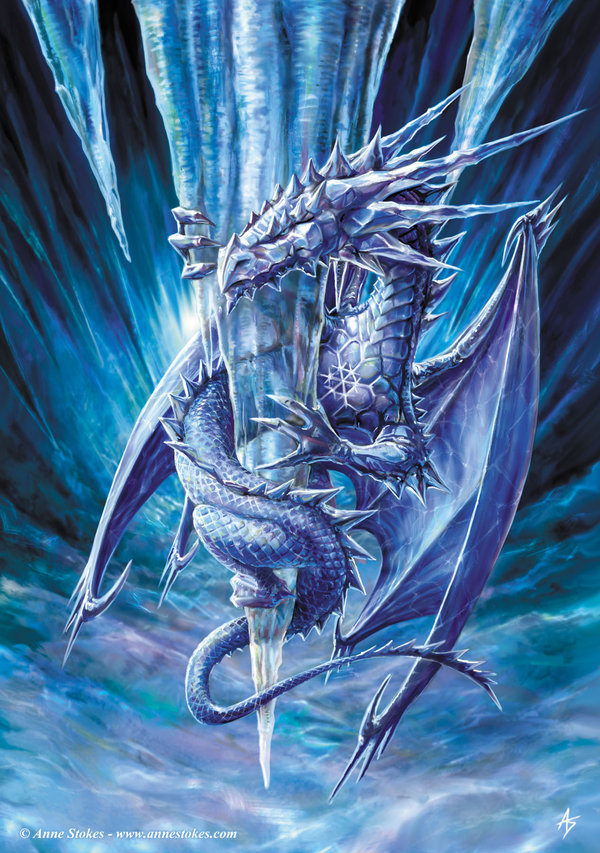

Ice dragons are the most elusive of all species. Due to their small habitat region and the tundra elements which leave many reeling in their effort to explore it, little is known about the dragons apart from what was documented in the journeys of the first explorers of the land, and much of the information is guessed or evaluated based on other dragons. Ice dragons are slender in build, with thin bodies and narrow heads, though with large mouths, broad wings and long tails. It is thought that they are built so lightly in order to run as well as fly, with the tail acting as a balancing aid, which hints that they are very stealthy and are able to reach a high speed when running on the ice. They have been documented to be just more than one and a half horses tall at the shoulder, but have long necks and tails which are slightly out of proportion to their body sizes.
Mating is very rare. They are aggressive and keep a strict territory in the tundras and on the ice, only allowing prey to enter the boundaries, though are thought to lay one egg after mating, which they raise and ensure that it will survive into adulthood by keeping it close, or until it reaches the age to find a new territory, at which the mother will drive the offspring away and regard it as just another dragon if they are to cross. There have been no records of an ice dragon allowing a human to ride it, as there have been few sightings in history and even less in the years where riding has peaked.
These are merely guidelines to developing a dragon; they range from all shapes and sizes, colours and creeds. There is no right or wrong.
Creatures of Pleoth
xxx
- Bleapseleon
-

Bleapseleon are compared to yaks, though are much smaller than their counterpart. Smaller than a pony, these mammals are covered in thick, long hair which dangles along the ice while they walk; eating dried plants which they find beneath the ice and piling up on fat to store in their large rump before winter comes in order to sleep through the cold months. They travel alone or in groups of two to four. The people of Pleoth keep these animals as companions in winter due to their thick coat and extremely friendly nature towards humans, where they will gladly allow a stranger to cuddle up in their fur. Their trusting nature caused their numbers to dwindle when settlers first arrived on Pleoth, who wanted the animals for their fatty meat and long coats to make blankets and clothing, though the remaining civilians rather protect them and will only use the animal for meat and fur once it has died of natural causes. - Camadraum
-
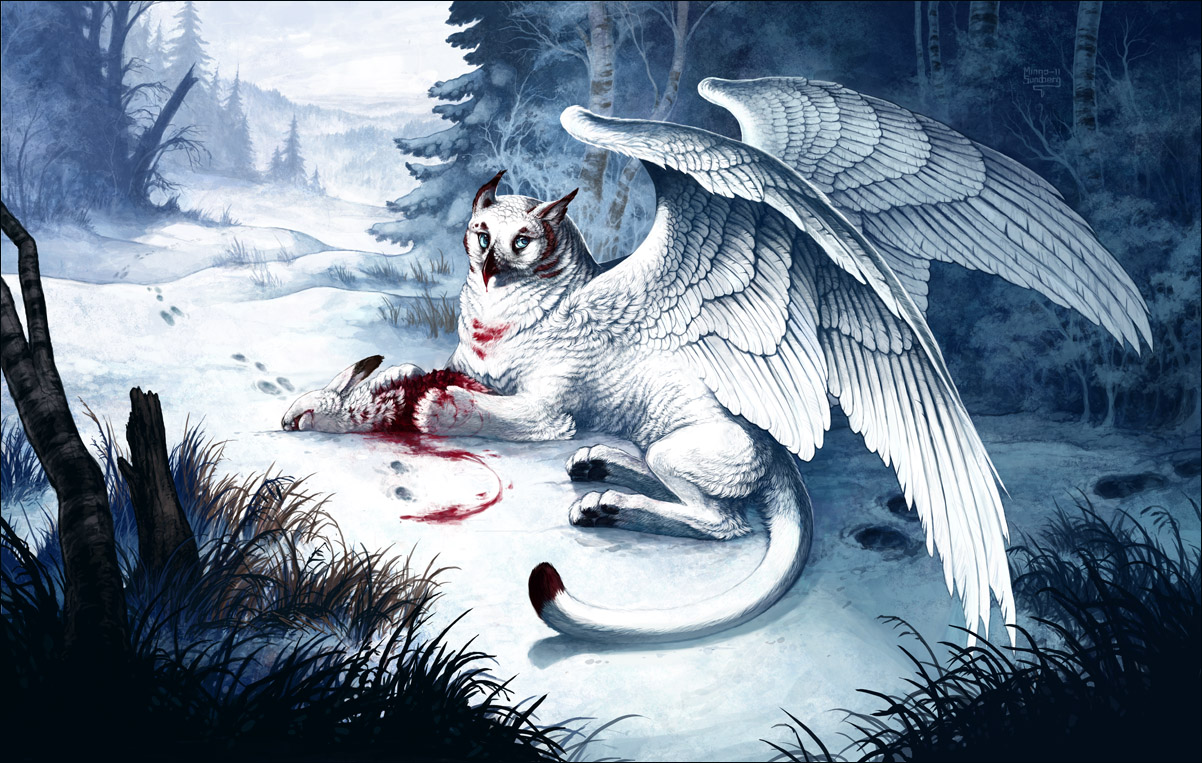
Thought to be brought upon by dark magic and meddling, the Camadraum is a combination of snow leopard and owl. The majority of its body is covered in downy, soft feathers, and it is around the size of a normal leopard. It is a rare sight to see, though is not awfully aggressive unless it feels there is an intruder or is a threat to itself or its young.[/font]
Last edited by a moderator:

